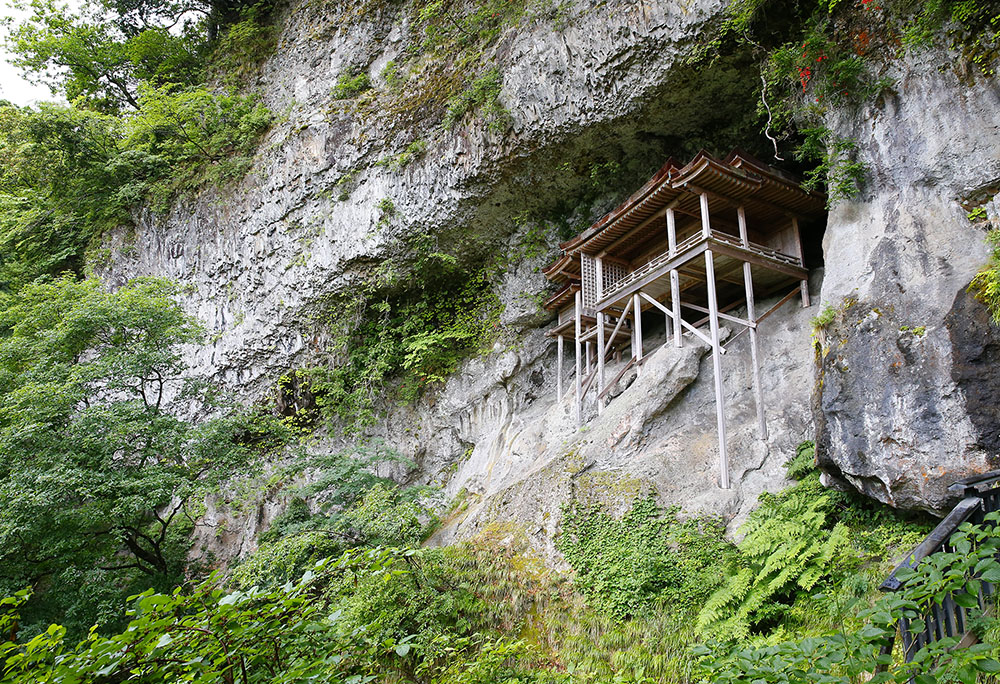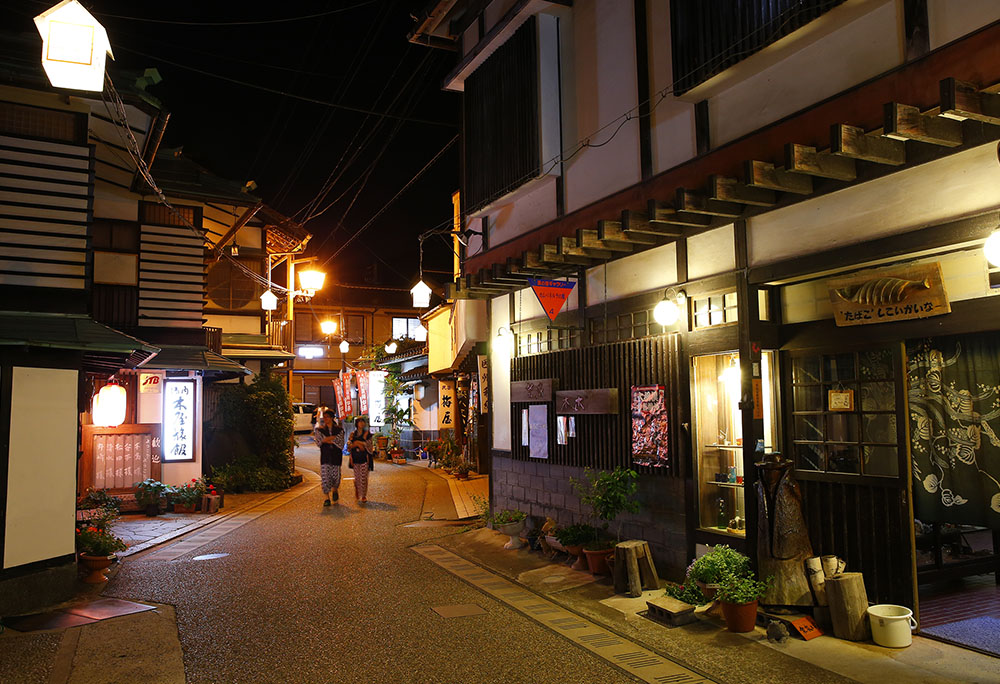
Mt. Mitoku, at 889.7 m in height, is renowned for its pristine natural forests and long history of mountain worship. Sanbutsuji Temple, at the base of the mountain, was founded in 706 as a hall for mountain ascetics. Even today, worshippers still climb Mt. Mitoku’s steep rock faces and pray at the temple to purify their six Buddhist senses (sight, smell, hearing, taste, touch, and mind).
The temple’s Mountain Sanctuary, called the Nageiredo, was constructed over 1,000 years ago, and is designated a National Treasure. This small wooden temple, surrounded by native broad-leaved forests, clings almost magically to the sheer rocky cliff. Domon Ken (1909–1990), an accomplished photographer famous for his portrayals of temples, praised the Nageiredo as the finest architecture in the country. The name Nageiredo means something like “Throw In Hall.” According to local legend, the hall was built by En no Gyoja (634–701), the founder of Japanese mountain asceticism. According to legend, En no Gyoja built a hall at the base of the mountain, and then through his spiritual powers made it very small with his power and hurled it at the cliff. When the hall struck the rock, it became the Nageiredo as we know it today.
Due to their sacred status, the forests of Mt. Mitoku have not been logged, and thus remain in a pristine natural state. A wide variety of birds, such as the golden eagle (Aquila chrysaetos), the Oriental dollarbird (Eurystomus orientalis), and the ruddy kingfisher (Halcyon coromanda), are encountered along the mountain paths.






